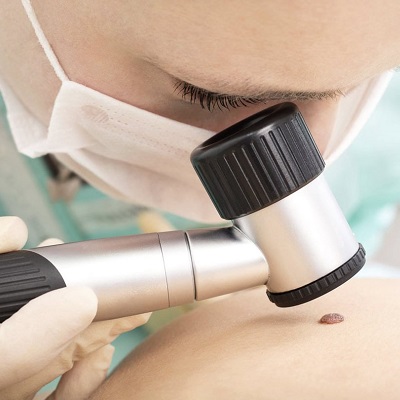When it comes to evaluating moles, accuracy is everything. A mole that looks harmless on the surface may carry subtle signs of change beneath the skin—signs that can be missed without the right tools. That’s why dermoscopy has become a trusted method in dermatology. It offers a magnified, illuminated view of skin structures, helping specialists make informed decisions. In the health-conscious city of the UAE, Dermoscopy Mole Evaluation in Dubai is recognized for its reliability in detecting early skin changes and guiding proactive care.
What Makes Dermoscopy Reliable
Dermoscopy, also known as dermatoscopy, uses a handheld device called a dermatoscope. This tool allows dermatologists to see patterns, colors, and vascular structures beneath the skin’s surface. Unlike a standard visual exam, dermoscopy reveals:
- Pigment networks and dots
- Vascular formations
- Asymmetry and irregular borders
- Subsurface structures are invisible to the naked eye
These details help differentiate between benign moles and those that may require further investigation.
Scientific Backing and Clinical Accuracy
Numerous studies have shown that dermoscopy significantly improves diagnostic accuracy compared to unaided visual inspection. It reduces the number of unnecessary biopsies and increases the early detection rate of melanoma and other skin cancers. Dermatologists trained in dermoscopy can identify subtle changes that would otherwise go unnoticed, making it a powerful tool in preventive skin care.
When Dermoscopy Is Most Effective
Dermoscopy is especially reliable when used in the following scenarios:
- Monitoring atypical moles over time
- Evaluating new or changing lesions
- Assessing high-risk patients with fair skin or family history of skin cancer
- Distinguishing between benign and malignant growths
- Documenting mole evolution with digital imaging
Its reliability increases when combined with clinical experience and follow-up evaluations.
Limitations to Keep in Mind
While dermoscopy is highly effective, it’s not infallible. It does not replace biopsy when a lesion appears suspicious, nor does it guarantee a diagnosis on its own. Its accuracy depends on:
- The skill and experience of the dermatologist
- The quality of the dermatoscope
- The clarity of the lesion being examined
- Whether the mole is pigmented or non-pigmented
That said, when used correctly, dermoscopy is one of the most reliable non-invasive tools available for mole evaluation.
What to Expect During a Dermoscopy Session
A dermoscopy evaluation is quick, painless, and non-invasive. During your visit:
- You’ll be asked to sit or lie comfortably
- The dermatologist will examine the mole using a dermatoscope
- A gel may be applied to enhance visibility
- Images may be taken for future comparison
- The entire process usually takes less than 15 minutes
There’s no downtime, and you can resume normal activities immediately.
Dermoscopy Mole Evaluation Dubai: Trusted for Accuracy
In a city that blends innovation with wellness, Dermoscopy Mole Evaluation Dubai offers expert-guided assessments using advanced dermoscopic technology. Clinics here focus on precision, safety, and patient comfort—ensuring that every session delivers reliable insights into your skin’s health.
Final Thoughts
Dermoscopy is a highly reliable method for evaluating moles. It offers detailed, non-invasive insights that support early detection and informed decision-making. While it doesn’t replace biopsy in all cases, it significantly enhances diagnostic accuracy and reduces unnecessary procedures. In Dubai, expert providers ensure that your journey to healthier skin is both safe and empowering—helping you feel confident in every layer.





Comments